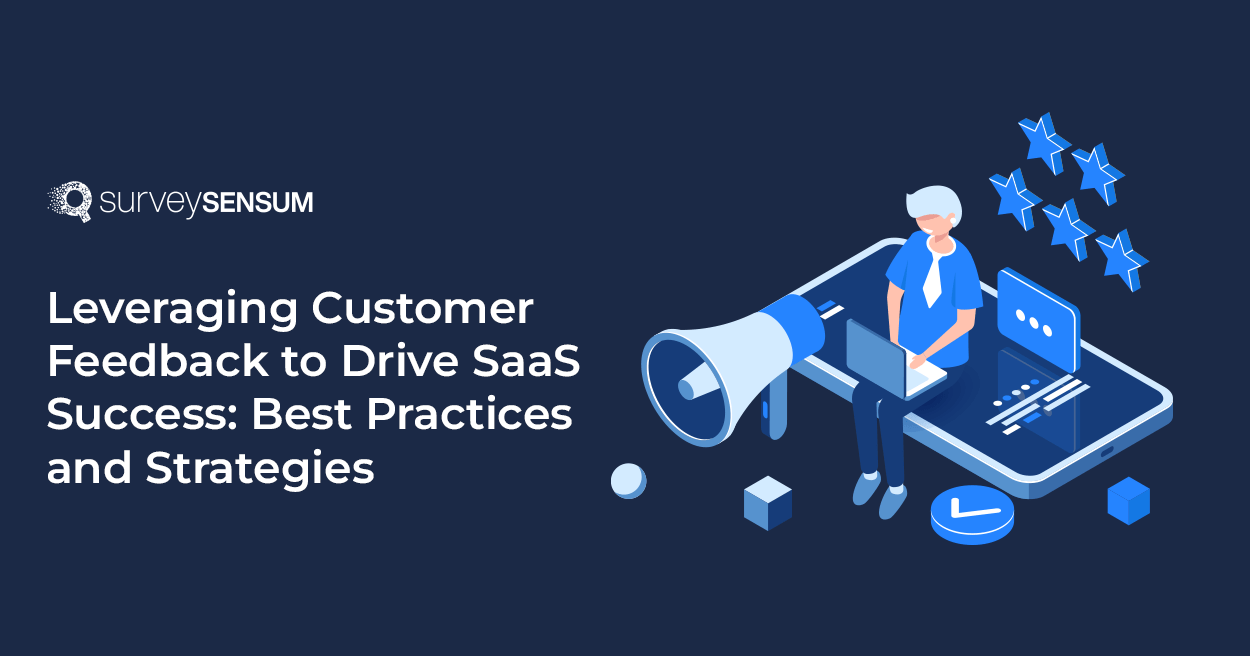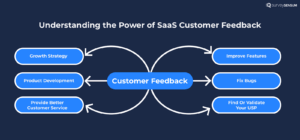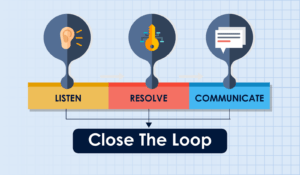9 Ways to Improve NPS Response Rates
Read More

A SaaS company receives a suggestion from a customer about simplifying the user interface. They take this feedback to heart, make the necessary adjustments, and boom—user engagement shoots up by 30%.
This isn’t just luck; it’s the outcome of a strategic approach to customer feedback. In the realm of SaaS, such success stories are born from leveraging customer feedback.
Customer feedback isn’t just a collection of opinions; it’s a treasure trove of actionable data that can steer your SaaS venture toward unparalleled triumph.
And this is what we’re going to talk about in this discourse.
Here we’ll explore the power of leveraging SaaS customer feedback with the help of a robust SaaS customer feedback software. All this can lead your SaaS companies to transform customer insights into tangible success.

Gathering customer feedback in the B2B SaaS industry can do wonders.
How?
When you conduct customer feedback, then you get to know your users’ thoughts, experiences, and expectations. Not only that. With the gathered feedback you can:
In short, customer feedback isn’t an extra—it’s the rocket that propels your B2B SaaS customer journey to success. This is like having a map showing where to improve and what to keep doing right.
Now that you know the power of feedback in the SaaS world.
Let’s have a glance at the best strategies to incorporate in customer feedback to drive your business.
Here are the strategies that can effortlessly blend customer feedback into your SaaS operations, to grow your business.
With these 3 strategies, you can effectively collect your B2B SaaS customer feedback.
You must use a powerful customer feedback tool that can not only be adept at collecting real-time feedback but also offers advanced features like sentiment analysis, closing the feedback loop, a customizable dashboard, and real-time insights, and more.
SurveySensum, for instance, not only collects feedback but also empowers you with valuable sentiment analysis and NPS dashboards.
Launch Customer Feedback with SurveySensum – Request a Demo
Monitoring customer experience is akin to taking your business’s vital signs. Metrics like
These CX metrics provide invaluable insights into customer sentiment. And consistent tracking of these metrics reveals the health of your customer relationships. It also serves as a compass guiding your retention strategies.

Feedback isn’t a monologue; it’s an ongoing conversation. So after gathering the feedback, you have to categorize it into distinct segments – promoters, passives, and detractors. Once you categorize them, then you can tailor your responses. For instance,
This shows that you’re actively listening to the voice of your customers and their opinions are heard and valued. Also, don’t forget to update your customers about the progress of their issues.
Now let’s explore how to channel SaaS customer feedback for growing your business.
Following are the 6 ways through which you can leverage your customer’s feedback.
Create a hub for feature requests and suggestions. This single repository enhances your SaaS products and services by aligning them with user desires. To do this, you can use surveys and feedback boards to consolidate ideas and prioritize development.
You can unlock insights from social platforms, where customers candidly share opinions. There are several tools that monitor brand mentions, comments, and posts, and then convert these voices into strategies that foster engagement, community, and growth.
Your customers share their expectations and experiences in their feedback. By analyzing this feedback, you gain multiple insights about your product, support, and more. You can leverage these product insights by incorporating them into your product roadmap. This approach will let you prioritize features, enhancements, and updates according to user votes, aligning them with your business goals.
Onboarding should be a seamless journey, not an obstacle course. And to do that you must use feedback forms strategically to pinpoint pain points and refine the onboarding process. Also, create a resourceful knowledge base like FAQs, guides, etc. that equips users with quick solutions.
Create Onboarding Surveys with SurveySensum – Request a Demo
Your churned customers are more than the lost revenue; they hold the key to improvement. Deploy feedback forms upon cancellation to uncover reasons and act swiftly to address their concerns. By incorporating this feedback, you can refine your retention strategies and diminish future churn rates.
Your customers hold the map to your success; you just need to LISTEN to them.
Dive into their feedback to decipher their needs, preferences, and expectations. This understanding serves as the fuel for refining your product offerings, ensuring they align with the ever-evolving demands of your user base.
Now you know how to channel customer feedback correctly. But wait. Do you know the right way to ask for feedback from your customers?
Here are the two ways that can help you to ask for customer feedback effectively.
Start by creating surveys that are well-structured and easy to navigate. Strategically integrate feedback buttons that users can access effortlessly. Thoughtfully deploy in-app prompts that capture their attention at the right moment.
And frame clear, and concise questions that are easy to understand and naturally encourage active participation.
Timing is crucial for effective feedback. So, launch the survey during the key moments– after onboarding, following a purchase, or when users engage with specific features. Finding the right balance between collecting insights and not overwhelming users is vital to keep them engaged.
Incorporate these strategies effectively to drive your SaaS business toward success.
When refining your SaaS growth strategy through customer feedback, keep in mind that bombarding your customers with surveys can be overwhelming for them. Therefore, it’s important to avoid survey fatigue.
But how can you ensure that your feedback system isn’t overwhelming your customers? This is where SurveySensum comes in—an innovative platform that not only allows you to create customer feedback surveys but also gives recommendations on the optimal timing for launching surveys and sending friendly reminders. This platform is designed to prioritize user satisfaction. You can explore it now.
